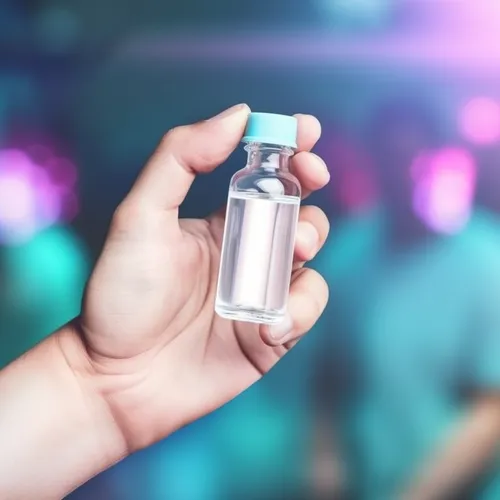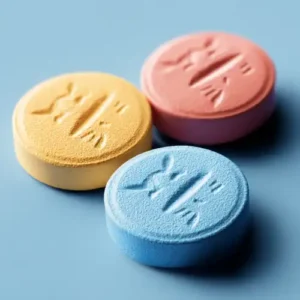The Dangers of GHB: A Club Drug That Can Kill
Gamma-hydroxybutyrate, commonly known as GHB or “liquid ecstasy”, is a powerful depressant drug that has become popular in club scenes despite its dangerous side effects. Initially created as a surgical anesthetic in the 1960s, illicit use of GHB emerged in the 1980s and it has become increasingly associated with drug-facilitated sexual assault crimes due to its ability to cause sedation and memory loss.
What is GHB?
Chemically related to GHB are gamma-butyrolactone (GBL) and 1,4-butanediol (1,4-BD), which the body metabolizes into GHB once ingested. These three substances are clear, odourless liquids that produce feelings of euphoria and disinhibition in users similar to the effects of alcohol or MDMA. They have a slightly salty taste and are usually diluted in water or other beverages before being swallowed.
While GHB has limited medical applications today, GBL and 1,4-BD are common solvents found in products like paint thinners and stain removers. Their industrial applications provide easy access for recreational use, though possession of GHB, GBL and 1,4-BD solely for the purpose of intoxication is illegal.
Prevalence in the UK
According to the Advisory Council on the Misuse of Drugs (ACMD), use of GHB, GBL and 1,4-BD seems fairly widespread in UK club scenes but hasn’t spread much among the general population. Unlike other illicit drugs, these substances don’t show up in national drug use surveys.
Anecdotal reports point to prevalent use in gay nightclubs in particular, though quantifying the scale of misuse is difficult. The small doses involved make detection challenging, and limited toxicology screening is done for these drugs in suspected drug-facilitated sexual assault cases.
Euphoria and Disinhibition
In doses of 1-2ml, GHB produces feelings of relaxation and euphoria akin to being drunk. Users describe increased confidence, lowered inhibitions, and enhanced sexuality similar to the effects of MDMA. Higher doses of 2-5ml induce sleepiness and eventual unconsciousness.
Some bodybuilders misuse GHB/GBL/1,4-BD as the deep sleep they promote releases growth hormone. Recreationally, the drugs are usually taken intermittently in clubs rather than frequently at home. Binge drinking and mixing with alcohol heightens the risk of overdose.
Easy to Overdose
The line between a recreational dose and overdose is razor thin, with just a few extra millilitres bringing on an overdose. Each batch of illicitly produced GHB can have dramatically different potency, making dosing precarious.
Overdose symptoms include vomiting, seizures, loss of consciousness, respiratory depression, and potentially fatal coma. The combination of sedation and amnesia also facilitates predatory drug-assisted sexual assault.
While detecting GHB intoxication in victims is difficult, a 2006 study found it present in only 2 out of 120 alleged drug-facilitated sexual assault cases in the UK. However, the presence of these drugs likely goes underreported.
A Frightening Dependency
Evidence shows that long-term use of GHB/GBL/1,4-BD can lead to physical dependency and addiction. Even short periods of frequent use on weekends has triggered dependency in some users. Withdrawal symptoms include insomnia, anxiety, tremors, and psychosis.
Doctors currently treat withdrawal with benzodiazepines to ease the delirium and seizures, but more research is underway for other treatment options. Support groups are appearing to help dependent users quit.
Tighter Legal Controls
After a 2020 assessment of their potential harms, the ACMD advised upgrading GHB from the less serious Class C category to Class B under the Misuse of Drugs Act in the UK.
In early 2021, Parliament approved this proposed reclassification. GBL and 1,4-BD will face the same Class B restrictions as GHB itself, with exemptions requiring a licence for legitimate industrial uses. Tighter controls aim to curb recreational misuse while still permitting medical applications. There have been calls to tighten the law to make GHB and GBL Class A drugs in future,
A Risky Party Drug
While the euphoric and disinhibiting effects of GHB, GBL and 1,4-BD may seem appealing to partygoers, the addictive potential and narrow margin between a party dose and a lethal dose makes recreational use extremely hazardous. Dependent users desperate to avoid harsh withdrawals fuel demand for these risky substances.
Tighter legal restrictions send a message about the serious dangers of GHB-type drugs. But easing the addiction and preventing the harm in the first place will require greater public awareness. Recognising the signs of GHB intoxication and overdose can save lives.
GBL Drug Testing
A GBL identification test can be used for the presumptive identification of GBL (gammabutyrolactone)
Photo “GHB” by Anthony Cunningham for Zoom Testing
Zoom Testing is a leading UK drug testing company and a supplier of Drug Test Kits.





